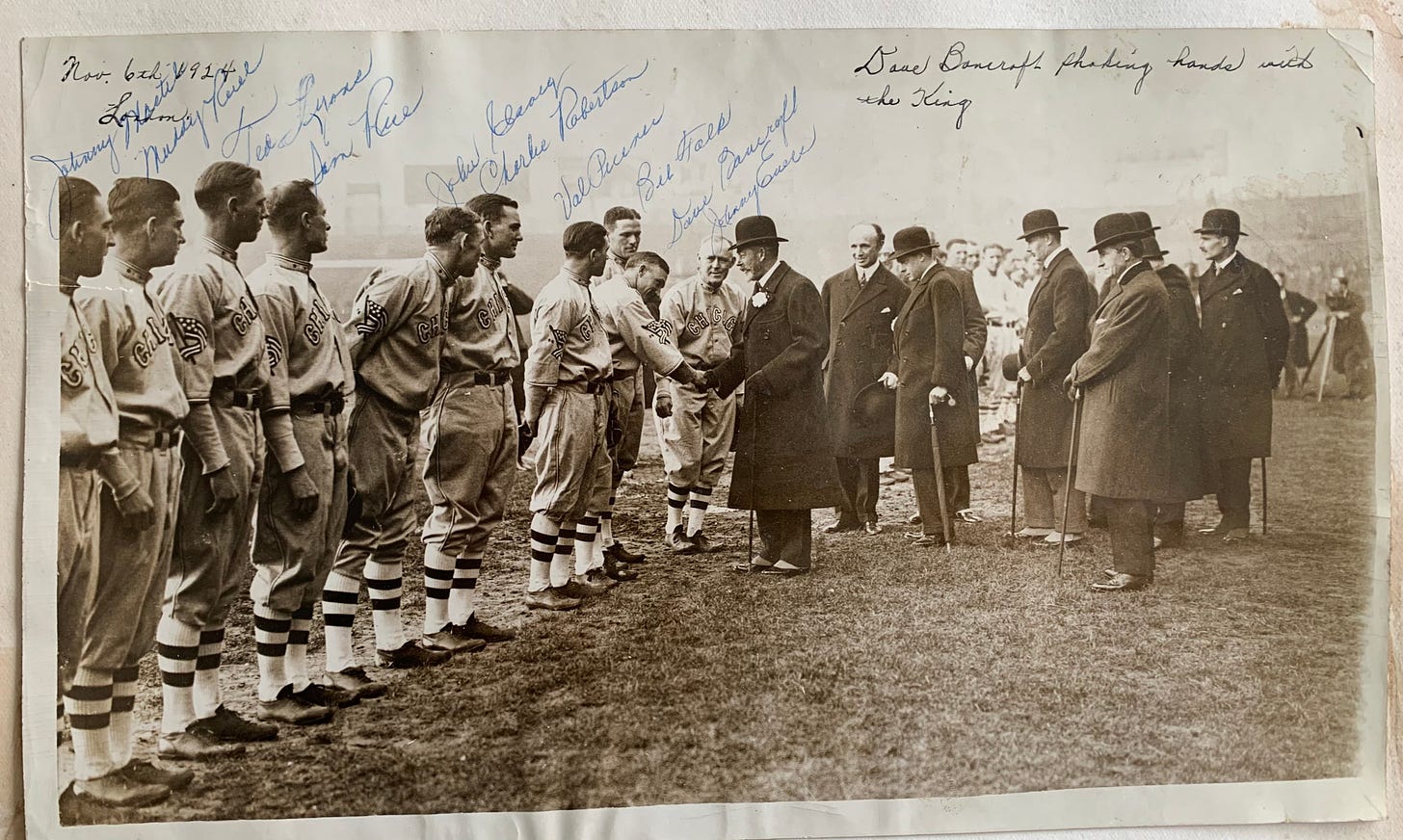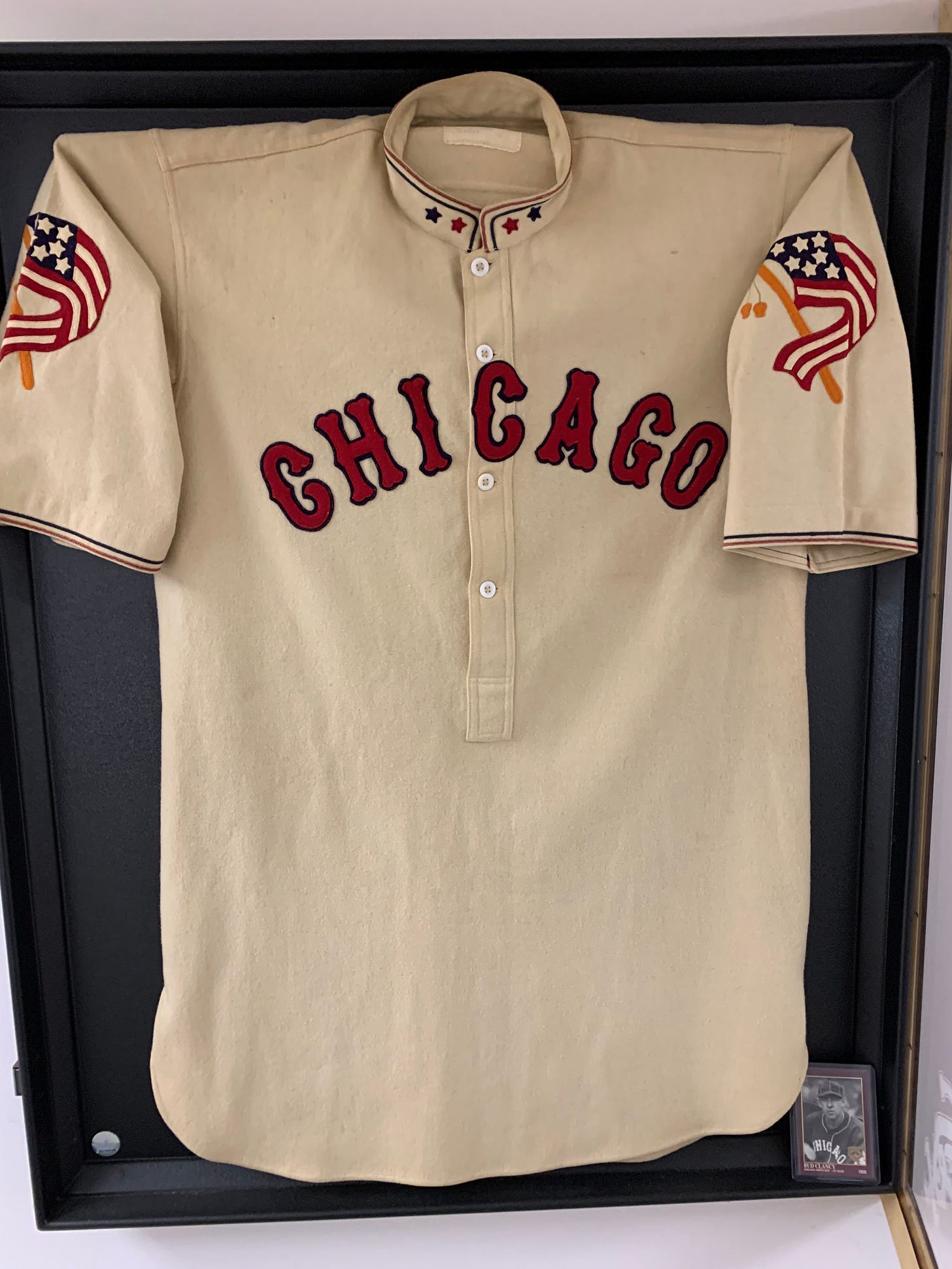Dublin’s Croke Park: No Luck with the Irish
A SABR member recalls when two baseball legends took an excursion to Ireland
IBWAA members love to write about baseball. So much so, we've decided to create our own newsletter about it! Subscribe to Here's the Pitch to expand your love of baseball, discover new voices, and support independent writing. Original content six days a week, straight to your inbox and straight from the hearts of baseball fans.
Pregame Pepper
Did you know…
. . . Forty-seven players have participated in Major League Baseball after being born in Ireland. Only one (Joe “Fire” Cleary, who was born in Cork but graduated from high school in New York) was born after 1920, with the heavy majority coming to the country before 1900 as immigrants to the United States.
. . . Of those 47 players, two pitchers stand out in Baseball-Reference’s measure of Wins Above Replacement, with the two achieving at least 35 bWAR more than the next-closest player. The first is Tony Mullane, the Irish-born career bWAR leader with 66.6. Mullane was right-handed, though it was noted that he threw left-handed a number of times. He won 284 games between 1881 and 1894. Mullane is still the all-time leader in wild pitches, with 343. No other pitcher has topped 300 in the history of the game.
The second notable Irish-born pitcher is righty Tommy Bond, born in Granard before his family immigrated to Brooklyn in 1862. He was one of the first to challenge hitters from the pitcher’s box, and his varied deliveries to the plate led to a change in the rule to require all pitchers to throw overhand, but Bond had already accumulated 234 victories and 61 bWAR by then. Bond’s best season came in 1877 when he won the pitching triple crown by leading the National League with 40 wins, a 2.11 ERA, and 170 strikeouts. Bond was one of two pitchers on the Boston team that would win the National League that season.
Leading Off
Dublin’s Croke Park: No Luck with the Irish
By Bill Pearch
John McGraw and Charles Comiskey attempted to recapture the old magic during the fall of 1924. The leaders of the New York Giants and Chicago White Sox devised a plan to promote baseball on an international stage much like they did after the 1913 World Series. Each team’s regular roster included supplemental National and American league players. Early reports indicated that the tour would commence with a series of pre-tour Canadian exhibition games, including stops in Montreal, Ottawa, and Quebec City. From there, the squads would set sail and cross the Atlantic Ocean with stops in Ireland, England, Belgium, France, Italy, and Germany.
McGraw, whose Giants recently lost the 1924 World Series to the Washington Senators, stated their intent was “to strengthen the bond of sport between this country and Europe” with a baseball goodwill tour following the conclusion of the season.
Comiskey, whose White Sox were rebuilding in the wake of the Black Sox Scandal, noted that they intended to take “baseball into cities where it never had been seen before.”
The actual tour, more subdued than initially advertised, totaled only 12 games. That included four in Canada, four in England, one in Ireland and three in France. For good measure, the Giants and White Sox split the series six games apiece. When the European leg of the tour opened, it started on a positive note. Players seized photo opportunities and earned an audience with British royalty in London which included the Prince of Wales and, later, King George V.

Then the teams ventured to Ireland for a dreary Sunday morning game on October 26. A small group of Dubliners attended. Collectively they yawned.
If McGraw and Comiskey, both with Irish heritage, hoped to slug a home run on the Emerald Isle, they fanned instead. Inclement weather and inadequate publicity delivered two knee-buckling curve balls. An 11 a.m. starting time, which ran counter to traditional Sunday church services, was strike three. A miniscule number of fans—reported anywhere from one dozen to 20 fans maximum—watched the White Sox double up the Giants, 8-4, at historic Croke Park.
According to the Irish American Baseball Society’s website, Irish sports historian David Wynne noted “considerable confusion about when the game might take place,” with original reports suggesting a November timeframe.
“On account of some misunderstanding in dates, our games were brought in conflict with Dublin football matches,” McGraw said, documenting the tour in a syndicated column, adding, “a fair sized gathering braved the rain and wind to see the exhibition.”
While McGraw and Comiskey failed to hit a figurative home run in Ireland, White Sox rookie first baseman John William “Bud” Clancy did. Literally. The entire tour, especially the Croke Park game, left an indelible impression on the 24-year-old product from rural Odell, Illinois.
During a December 2024 interview with the late first baseman’s nephew, John Michael Clancy recalled his family’s stories about his uncle being “an Irish kid from Odell hitting a home run in Dublin.”

The tour’s organizers canceled the second game planned for Dublin. The official reason provided was due to weather conditions, but realistically, it was related to fan apathy. But the remainder of the tour brought additional complications. The Dublin rain found its way to London. The fog that shrouded Paris’ Colombes Stadium was so thick that the crowd of 500 spectators could not even see the ball in play.
“[The teams] arrived practically unheralded and departed with the same secrecy which characterized their appearance in town,” a reporter from the Freeman’s Journal said. “Unsung, they came and unsung they go.”
The Boston Traveler wrote that an American baseball fan encountered writer Ring Lardner inside a London hotel and asked where the White Sox and Giants were planning that day.
“I don’t know,” Lardner said. “I have been trying to find out all morning and have been unsuccessful.”
“I was very favorably impressed by the trip,” Comiskey said upon returning to the United States, “as favorably as I hope Europe was impressed by us. We took baseball into cities where it never had been seen before, such as Dublin and Birmingham.”
Naturally, the trip could not conclude without complications. The teams, which boarded the steamship Leviathan and departed from Southampton, returned home one day late with “legs still shaky as a result of their rough voyage” due to a storm.
“Next time we undertake a European tour,” McGraw said, “we will bring a couple of thousand fans with us or we will not come.”
Bill Pearch, a lifelong Chicago Cubs fan, serves as secretary/newsletter editor for SABR’s Emil Rothe Chapter (Chicago). His article, “García Dominates as White Sox Offense Slugs Way to 50th Win,” appears in SABR’s latest publication highlighting the 2005 Chicago White Sox. Follow him on Bluesky: @billpearch.bsky.social.
Extra Innings
The baseball writing world lost John Feinstein last Thursday. Feinstein was an accomplished sports writer who found success covering a wide variety of sports, but he did have a flair for writing baseball articles and books as well.
One of his best was his 2014 examination of the International League in “Where Nobody Knows Your Name: Inside the Minor Leagues of Baseball.” This is one of the archived interviews that he did regarding the book:



Even in 1924 they knew that going up against soccer in Europe was a death sentence. Great piece, Bill!